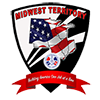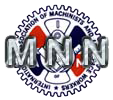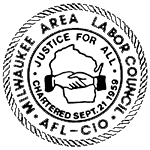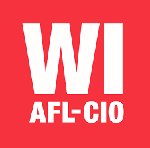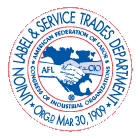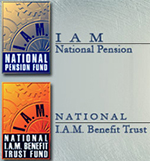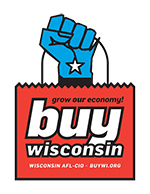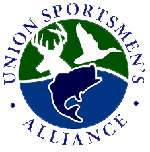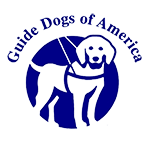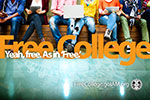A Short History of Machinists Lodge 34
by Bill Buzza, past president of Lodge 34. This article appeared in The Kenosha Labor, April 17, 1987.
(Much of the information set out below was contained in meeting minutes compiled since the founding of Lodge 34. In addition, a number of members contributed information which was not contained in Lodge 34’s records. I would like to take this opportunity to thank them for their assistance.)
IAM Lodge 34 is part of the 750,000 member International Association of Machinists and Aerospace Workers, which is frequently known as the Machinists Union. IAMAW Lodge 34 was chartered on June 8, 1897. The Charter is on display in the Lodge Office, 1000 – 56th Street, Kenosha.
Mr. Jacobsen, the Lodge’s first president, helped a Mr. Adams organize the Simmons Company on May 5, 1916. They worked out a contract in the officers’ home.
Charles Schaffer was president in 1917 and extensive organizing drives and ties with the Racine IAMAW Lodge were underway. Their meetings were held at the Socialists Hall and the Lodge was not part of the Kenosha Trades and Labor Council, which advocated the eight hour day.
The first lockout against Lodge 34 occurred in September 1917 by the C. M. Hall Lamp Company. This happened during World War I, when the Lodge maintained the dues for its servicemen.
In February 1918 and endowment fund, which was later dropped, began to pay sick benefits for members off for more that two weeks. Bylaws were also approved that year.
In 1919 A. DeBruin was elected president. Donations for the Grand Lodge Headquarters were collected and the Lodge began strong activity legislative lobbying. G. E. Clarke replaced the resigned DeBruin.
C. Burke was elected president in 1920. In that year one day’s pay was donated toward the new Kenosha Labor Temple. In 1921 Harry Nelson’s term as president saw a push for the Unemployment Compensation Bill. An honor system existed on dues collected at meetings. Three month delays called for expulsion.
President Frank Hamacheck, elected in 1922, guided the Lodge to support Senator LaFollette. He also pushed for other political action by Machinists. Affiliation with the State Federation of Labor begun.
In 1923 President Neil Bush resigned and was replaced by John Berns. Loans to Union brothers started. Meetings now being held at the Knights of Columbus Hall.
Berns was re-elected in 1924 and 1926. Company spy systems became a problem. Boycotts were active and each new member brought the recruiter one dollar. The Labor Temple was discussed and a paper wall the “Kenosha Critic” was voted as the Kenosha labor paper.
1926 was a rough year financially for Unions in America. In Lodge 34 those that could pay Union dues paid an additional $.50 and may others were granted a reprieve.
In 1927 Eugene Miller was elected president. The Union was visited by International President A. D. Wharton. Union meetings were moved to the Moose building. At this time new initiates were approved by membership vote.
The Lodge honored itself by having the 1928 Wisconsin State Federation Convention scheduled in Kenosha.
Clothes for striking coal miners were collected and Eugene Miller was re-elected president b acclamation. The carpenters began work on the Labor Temple in 1928 and approximately $35.00 per member was donated by Lodge 34. A vicious lockout of the Full Fashion Knitters Union at Allen A. Company was fully supported by the Lodge through its national publicity. Infiltrating company spies were tried, fined and expelled.
From 1929 to 1932 Charles Shaffer was president. Trying times with much unemployment were prevalent. The “Labor Appeal,” a paper with circulation of about 6,000 was distributed.
In 1933 Leonard Mattson was president. Meetings were held in members homes because of financial troubles. The Machinists members helped in resisting the Communist Party attempts to take over the Lodge. Troops were being used against strikers.
The years of 1934 to 36 saw President Mattson continuing his leadership. The 40 hour week, eight hour day, time and one-half for overtime on Saturdays and double time on Sundays was a firm position. Lobbying was active and effective. The Lodge had become strong again and was organizing production employees at the urging of John L. Lewis.
A move by the Nash Union to swallow the Machinists was resisted around 1936 when the IAM Convention in Milwaukee was entertained by the Racine – Kenosha District.
In 1938 Eric Bjurman was elected. Spies were resisted again and lobbying gained momentum. Bjurman led the Lodge until he joined the IAMAW International staff in 1941. Presidents after Bjurman were Frank Hill to 1945; Charles Fischer until he entered supervision; Joe Greenwald to 1946; Clinton Young to 1950; Don Werve to 1952; Harold rock to 1955; Gerhard Roemer to 1957; Matt Putra to 1958; William Cooper to 1959; Jasper Helton to 1965; Alex Bleashka to 1975; James Larrabee to 1976. In 1977 our current president, William Buzza took office.
In 1974 Lodge 34 opposed the computerized checkout system and went on record favoring the impeachment of Richard Nixon.
In 1979 the Lodge grew and elected for the first time two business agents to serve the membership.
In 1980 G & H Products went on strike developing into the longest and most bitter strike in our history. The strike ended in 1982 when the plant closed.
In 1983 the Lodge reverted back to one business agent.
Regular meetings are held the third Thursday of every month at 7:30PM at the Kenosha Club. The Local Lodge is governed by its members, who elect their officers by secret ballot elections every two years. An executive board composed to the Local President, Vice President, Treasurer, Recording Secretary, Sentinel-Conductor, and three trustees, all of whom are elected by members are responsible for the day to day operations of the Union.
In addition the Lodge membership by secret ballot, elects a Business Agent once every four years. The membership of each individual shop represented in the Lodge hold their own elections for bargaining committee and stewards to represent them. Each shop holds meetings as per their individual shop bylaws.
The shops currently represented by Lodge 34 are: Kenosha Leatherette; Ocean Spray Cranberries; Snap On Tools; L.C. Thomsen; Tri-Clover; Frank Wells Company; Chrysler; Monarch Plastics; and White Welding.
Members of Lodge 34 are active members in their community. We sponsor five $500.00 scholarships to students in our local high schools; we support the Soup Kitchen; United Way; CYC; and other non profit charitable organizations. We are regular contributors to the International Guiding Eyes, a non-profit sectarian guide dog training center in Sylmar, California which provides guide dogs free of charge to blind or visually handicapped persons from around the world.
Lodge 34 will have a party for its membership in celebration of this 100th Anniversary in the Kenosha area. A smorgasbord dinner will be served. There will be live music.
The following is an article appearing in the June 1948 issue of The Machinist, the magazine for the IAM & AW
Kenosha Unions Start Health Co-Op
A community health center cooperative that will provide complete medical and dental care to its members has been formally launched in Kenosha, Wisconsin with the help of trade Unions.
Leader in the movement is Business Representative Martell of IAM Lodge 34 who is the chairman of incorporating the new co-op.
The Wisconsin Attorney General has approved articles of incorporation of the new organization and plans are now being made for construction of a modern building to house it, Martell reported to The Machinists.
Martell explains that members expect to get better and cheaper medical and dental care for their entire families through the co-op than they could afford individually. The group will emphasize preventive rather than curative medicine and will encourage it members to improve their health through regular and thorough medical examinations.
Plans call for hiring a staff of 30 persons, including 13 physicians, to care for the 2,500 families that are expected to enroll.
A schedule of costs of services has not yet been announced, but it will be worked out in the near future.
Incorporation of the new Health Center culminates a years work by trade Unionists in Kenosha.
The first move towards formation of the Health Co-op was made last August by the Workers Education Council of which Martell is president. The council invited Dr. Michael Shadid, head of the nations first co-op hospital at Elk City, Oklahoma, to come to Kenosha to speak.

